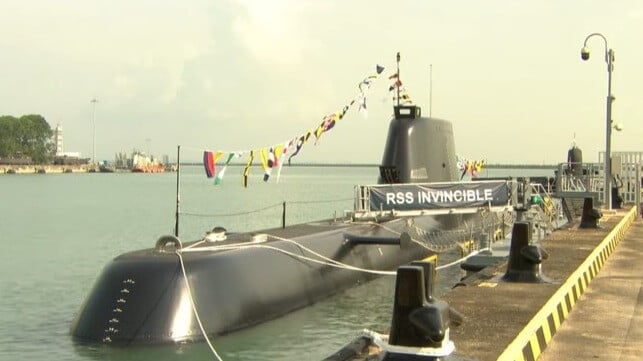Singapore's "Invincible" New Submarine Force

Singapore’s introduction into operational service of its new Invincible class of submarines appears to be an extraordinary success, offering valuable lessons for its former colonial master - the United Kingdom, which is now grappling with crew retention issues and its own challenging submarine expansion program under the aegis of AUKUS.
The first two Type 218SG submarines of the Invincible-class, RSS Invincible and RSS Impeccable, were commissioned into operational service on September 24, 2024 at Changi Naval Base. In his commissioning speech, Prime Minister Lawrence Wong described the program as critical to Singapore’s survival and prosperity as a maritime nation, and one which also lacks strategic depth.
The boats were built by ThyssenKrupp Marine Systems in Germany, but were heavily customized to meet Singapore’s particular needs. The submarines are designed ergonomically to suit Singaporean national servicemen, both from a physical and tech-savvy perspective. The well-planned working environment will help attract and retain high-caliber crews, both male and female, drawn from a nation committed to its national service program. Sensors, navigation and weapons systems are optimized for operations in congested and shallow waters, as found in the Malacca Straits and the South China Sea.
Future Republic of Singapore Navy Invincible-class Type 218SG submarine RSS Invincible coming into Kiel, Germany - December 9, 2022 #rssinvincible
— WarshipCam (@WarshipCam) December 9, 2022
SRC: webcam pic.twitter.com/JNJEGZeGCH
Diesel-powered, the Invincible submarines can travel at 10 knots surfaced, 15 knots underwater. With an air independent propulsion system for battery charging, the submarines can remain submerged for an estimated 45 days without snorkeling. Cruise endurance is unknown. With a total of ten 21- and 26-inch torpedo tubes, the submarines should be able to launch heavy torpedoes, anti-ship missiles and mines, and to deliver special force teams underwater through an airlock.
The submarines have been brought into service relatively quickly because the Singaporean Navy’s 7th Flotilla has built up a cadre of experienced crews through its previous operation of smaller Swedish Archer-class submarines, which will now begin to be retired from service.
In service, Singapore will face significant operational challenges. As a small island state, deployed submarines underwater will provide a valuable hinterland; but conversely, the boats will be particularly vulnerable while in port, even if a protection-from-view shed has been built wharfside to hide their presence or absence.
Two further submarines in the class, RSS Illustrious and RSS Inimitable, are due in service by the end of 2025. The overall cost of the program has been estimated as $1.8 billion. A fifth boat may also have been ordered. Other nearby nations may well be tempted to replicate Singapore’s submarine development programme, but Singapore has a 25-year head start.
